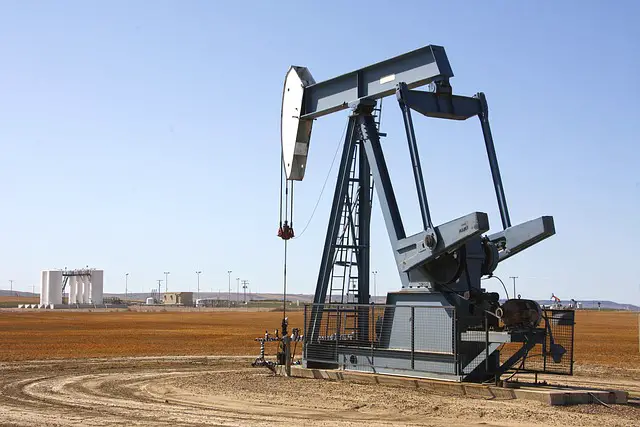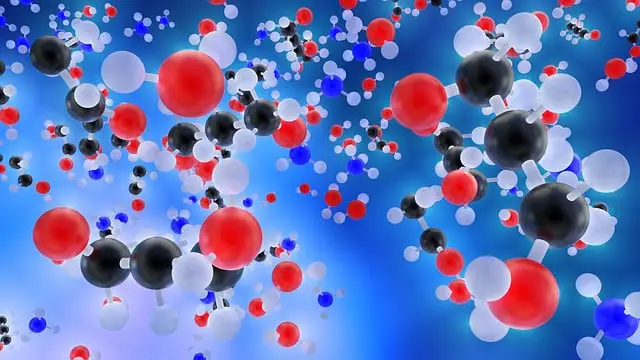
Chemical energy is the inherent potential of a chemical substance to undergo transformation through a chemical reaction or to be converted into other chemical substances. The formation or breaking of chemical bonds implies the presence and management of energy. This energetic process can manifest itself as absorption or release within a chemical system.
Chemical reactions, depending on their nature, have the capacity to release or absorb energy, thus revealing the intrinsic and diverse dynamics of chemical energy in the molecular world.
In this article we explain the fundamental concepts of this type of energy.
What is chemical energy?
Chemical energy is the form of potential energy stored in the connections between atoms and molecules. It manifests itself during chemical reactions when bonds between atoms are formed or broken. This energy is present in a variety of systems, from food to fossil fuels.
When chemical bonds are formed, energy is absorbed; When they break, energy is released. Chemical energy is fundamental to understanding biological phenomena, such as cellular respiration and photosynthesis, as well as industrial processes and energy generation.
Examples of chemical energy
Here are a few examples of chemical energy:
 Fossil Fuels: Hydrocarbons such as oil, natural gas and coal contain chemical energy stored in their molecular bonds. This energy is released during combustion.
Fossil Fuels: Hydrocarbons such as oil, natural gas and coal contain chemical energy stored in their molecular bonds. This energy is released during combustion.- Batteries: They store energy through electrochemical reactions between their components, converting it into electrical energy during discharge.
- Food: This type of energy is found in the molecular bonds of the organic molecules present in food, being released during digestion.
- Batteries and accumulators: They store chemical energy, releasing it as electrical energy when the circuit is completed.
- Explosives: Substances such as gunpowder contain chemical energy concentrated in their molecular bonds, releasing it during explosive reactions.
- Hydrogen: It can store energy in its gaseous or liquid form and is used as fuel in fuel cells to generate electricity through chemical reactions with oxygen.
- Biomass: Wood or organic waste stores this type of energy, releasing it during combustion to generate heat or electricity.
- Fertilizers: Some fertilizers contain nitrogen compounds that can release energy during decomposition processes or chemical reactions.
- Photosynthesis: Plants, algae, and some bacteria capture energy from sunlight and convert it into chemical energy stored in organic molecules, such as glucose.
Types of chemical energy
From a scientific point of view, chemical energy can be classified into several categories based on the different aspects that make it up and the associated chemical reactions.
Below we show a complete list of the types of chemical energy:
- Bond energy : Bond energy is the energy required to break a chemical bond and form separate atoms or molecules. The formation and breaking of bonds contribute to chemical reactions and can release or absorb energy.
- Activation energy : The minimum energy needed to start a chemical reaction. It represents the barrier that must be overcome for the reaction to occur.
- Reaction energy : is the amount of energy absorbed or released during a chemical reaction. It is measured by the difference between the energy of the products and the reactants. It can be exothermic (releases energy) or endothermic (absorbs energy). Its understanding is crucial to understand the behavior of substances in chemical transformations.
- Potential energy of electrostatic interactions : The energy associated with attractive or repulsive interactions between electrical charges present in matter, such as those found in ionic or covalent bonds.
- Electron kinetic energy : The energy associated with the movement of electrons around the nucleus of an atom. The distribution of electrons across energy levels affects the chemical properties of an element.
- Nuclear energy : The energy present in the nucleus of an atom, related to the union of subatomic particles such as protons and neutrons. Nuclear processes, such as fission and fusion, can release or absorb energy.
- Ionization energy : The energy required to remove an electron from an atom.
- Electronic affinity : The energy released when an electron is added to an atom.
- Solvation energy : The energy associated with the solvation of ions in a solvent.
- Phase change energy : The energy associated with phase changes, such as evaporation or condensation.
- Chemical energy in redox reactions : The energy released or absorbed during oxidation-reduction reactions.
potential chemical energy
 Chemical potential energy is a form of potential energy related to the structural arrangement of atoms or molecules. This arrangement may be the result of chemical bonds between the molecules.
Chemical potential energy is a form of potential energy related to the structural arrangement of atoms or molecules. This arrangement may be the result of chemical bonds between the molecules.
The chemical potential energy depends on the mutual position of the particles that constitute a substance. The strength of chemical bonds is associated with the distance between chemical elements. The strongest bonds are those that have the chemical elements involved closest together.
The similar term chemical potential is used to indicate the potential of a substance to undergo a change in configuration.
Nuclear chemistry
Nuclear chemistry is a branch of chemistry that deals with the study of the following chemical aspects:
-
nuclear properties (such as the structure of the atomic nucleus, nuclear reactions, and radioactive decay)
-
properties of the elements at the end of the periodic system (for which the detection of nuclear radiation is essential)
-
macroscopic phenomena in which nuclear processes intervene.
-
Application of analysis techniques based on nuclear phenomena in the study of scientific problems in a variety of scientific or technical fields.
Internal energy of a chemical reaction
The internal energy of a chemical reaction is the energy that is released or absorbed by a chemical reaction between the atoms of two chemical substances. This energy is equal to the difference between the amount of energy of the products and the reactants.
Chemical energy exchanges occur in the course of transformations that take place at the level of molecules.
Types of chemical reactions
There are 6 types of chemical reaction:
-
Decomposition: converting a complex substance into a simpler substance.
-
Simple displacement: occurs when an atom of one substance is transferred to another substance.
-
Double displacement: the atoms of two substances are exchanged with each other.
-
Combustion: by raising the temperature of a fuel (for example, coal), chemical reactions are generated that release heat.
-
Synthesis: is the energy that is released when a more complex substance is formed from two simple substances.
A particular case: fossil fuels
An additional term of relevance is "heat of combustion", which represents the energy released during a combustion reaction. This concept is frequently used in the analysis of fossil fuels.
Fuels contain chemical energy, which is transformed into mechanical energy through combustion, especially in heat engines. This conversion makes possible the direct transformation of the energy resulting from the chemical reaction of combustion into electrical or mechanical energy.